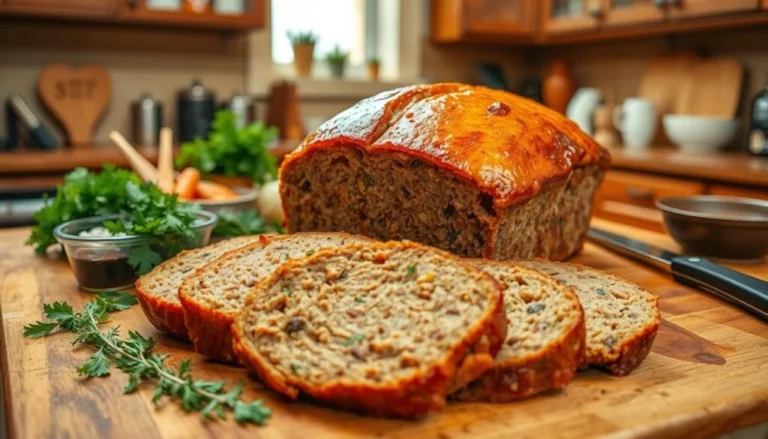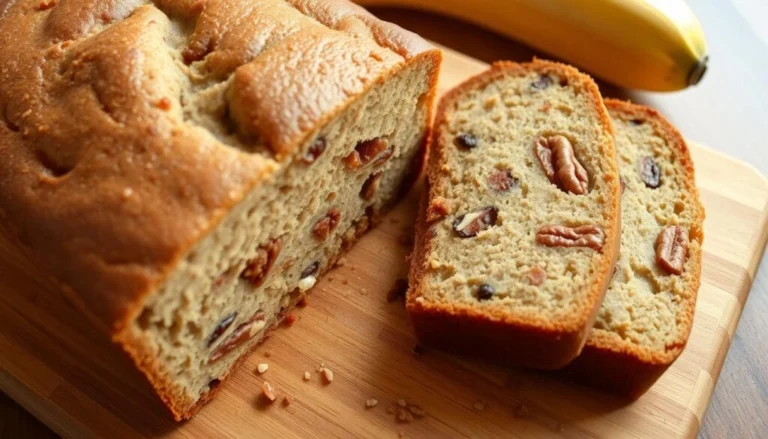Sawmill Gravy Made Easy: 5 Must-Know Tricks for Creamy Perfection

Sawmill gravy is more than just a creamy breakfast staple—it’s a symbol of Southern tradition, history, and comfort food at its finest. This hearty white gravy, often loaded with sausage or bacon drippings, has been a beloved part of country breakfasts for generations. Poured over fluffy biscuits or served alongside eggs and grits, sawmill gravy delivers bold, savory flavor and that unmistakable homestyle feel.
But where did sawmill gravy come from? How is it different from country gravy? And why do Southern kitchens swear by it? In this article, we’ll explore the fascinating history behind the name, uncover the key differences between regional gravy styles, and guide you step-by-step through traditional and modern recipes alike.
You’ll learn how this once-simple meal for lumber workers became a Southern breakfast icon. Plus, we’ll dish out expert tips, creative flavor variations, nutritional insights, and fun facts about biscuits and gravy that may just surprise you.
Table of Contents
PART 1: The Rich History of Sawmill Gravy
Where Sawmill Gravy Originated and Why It Matters
Sawmill gravy has deep roots in the rugged, working-class South, where food wasn’t just about flavor—it was about fuel. The story begins in the post-Civil War era, especially among sawmill and logging camp workers. These men needed hearty, filling meals that could power them through long, grueling shifts. Meat was expensive and often in short supply, so cooks would stretch drippings from fried bacon or sausage with flour and milk to create a rich, thick gravy. This economical, no-waste approach laid the foundation for what we now call sawmill gravy.
The name itself is a nod to the dish’s blue-collar beginnings. The coarse texture of early versions, sometimes gritty with flour or bits of meat, was said to resemble sawdust—hence, “sawmill gravy.” It wasn’t pretty, but it got the job done. It fed hungry workers and added warmth and richness to otherwise plain meals like biscuits, cornbread, or potatoes.
As Southern foodways evolved, sawmill gravy became more refined and beloved. It moved from lumber camps to family kitchens, diners, and brunch menus, earning its place as a cornerstone of Southern comfort food.
How the Name “Sawmill Gravy” Came to Be
The term “sawmill gravy” isn’t just catchy—it’s literal. According to culinary historians, the dish was originally served in logging camps and sawmills throughout the American South during the late 1800s. Workers needed affordable, energy-dense meals, and gravy made from flour, fat, and milk fit the bill. Sometimes, cornmeal or coarse flour made its way into the pot, giving the gravy a gritty texture reminiscent of sawdust.
Another theory suggests that the name came from the fact that the gravy was so thick and rustic that it could “hide” contaminants like sawdust that might accidentally fall into the food in sawmill kitchens. While that may sound unappetizing today, it was part of the reality of cooking in rough, makeshift conditions.
What began as a dish born out of necessity became a cherished part of Southern culture. Over time, sawmill gravy transitioned from survival food to a proud culinary tradition, often made with sausage, seasoned to perfection, and poured over buttery Southern-style biscuits.
PART 2: Sawmill Gravy vs. Country Gravy
Are Sawmill Gravy and Country Gravy the Same Thing?
At first glance, sawmill gravy and country gravy may seem identical. Both are creamy white gravies often served over biscuits or fried meats, especially at Southern breakfast tables. However, subtle but important differences make each one unique—and knowing these differences can elevate your cooking game.
Sawmill gravy traditionally includes the browned bits and flavorful drippings left over from cooking sausage or bacon. These drippings, often seasoned with black pepper, form the base of the gravy. The result is a rustic, speckled sauce packed with rich, meaty flavor and just a touch of grit—a signature trait that harkens back to its origins in sawmill camps.
In contrast, country gravy—sometimes referred to as white gravy—is typically smoother and milder. It’s often made with butter or oil instead of meat drippings, and while it may include sausage, it’s also frequently served without any meat. Country gravy is the go-to for chicken-fried steak or mashed potatoes in many parts of the South and Midwest.
In short, while both gravies share a milky base and a creamy texture, sawmill gravy leans more toward a bold, smoky flavor rooted in sausage or bacon fat, whereas country gravy can be simpler and more refined.
Key Ingredient Differences That Set Them Apart
To make it easier, here’s a quick comparison of the key differences between sawmill gravy and country gravy:
| Feature | Sawmill Gravy | Country Gravy |
|---|---|---|
| Main Fat Source | Sausage or bacon drippings | Butter or vegetable oil |
| Texture | Thicker, rustic, often with meat bits | Smoother and creamier |
| Common Add-ins | Sausage crumbles, black pepper | Occasionally sausage, but not always |
| Flavor Profile | Rich, savory, smoky | Mild, buttery, slightly peppery |
| Traditional Use | Biscuits, eggs, grits | Chicken-fried steak, mashed potatoes |
So, while both gravies are staples of Southern breakfast traditions, the ingredients you use and the method of preparation will determine whether you’re making sawmill gravy or country gravy.
PART 3: Southern Culinary Roots and Traditions
Sawmill Gravy’s Role in Southern Breakfast Culture
Sawmill gravy isn’t just a side dish—it’s a cultural centerpiece of the traditional Southern breakfast. Whether you’re dining in a cozy country diner or enjoying Sunday brunch at home, you’ll often find this creamy, pepper-flecked gravy poured generously over hot buttermilk biscuits, alongside eggs, grits, and crispy bacon.
Its role in Southern culinary traditions runs deep. Historically, it was a breakfast born out of necessity, made from pantry staples like flour, milk, and leftover drippings. But over time, it became associated with warmth, hospitality, and family. Southern households passed down gravy recipes just like heirlooms, and many families still take pride in their “secret touch”—be it a certain sausage blend, a dash of cayenne, or the way they stir in the milk.
In many small towns, breakfast isn’t breakfast without sawmill gravy. Its presence on a plate signals comfort, tradition, and home. It’s the ultimate symbol of Southern comfort food, offering nostalgia with every spoonful.
PART 4: Classic Sawmill Gravy Ingredients

Traditional Components That Make It Authentic
The soul of sawmill gravy lies in its simplicity. Made with only a few ingredients, its rich flavor comes not from complexity but from technique, seasoning, and quality components. Let’s break down the key ingredients that create that unmistakable Southern taste:
- Meat Drippings: Traditionally, sawmill gravy starts with the fat left from frying breakfast sausage, bacon, or even country ham. These drippings infuse the gravy with a smoky, salty depth.
- All-Purpose Flour: This forms the base of the roux. When whisked into the hot fat, it thickens the gravy and adds body. A golden or slightly brown roux brings out a nutty flavor essential to authentic Southern gravy.
- Whole Milk: Milk gives sawmill gravy its creaminess. Whole milk is preferred for its fat content, which blends beautifully with the roux for a smooth texture.
- Salt and Black Pepper: Freshly cracked black pepper is a defining trait. It adds a gentle bite that balances out the richness of the fat and flour.
- Optional Sausage Crumbles: In many recipes, cooked sausage is crumbled into the gravy for extra texture and flavor. This adds protein and turns the gravy into a centerpiece, not just a topping.
Here’s a simple table of a traditional ingredient list:
| Ingredient | Purpose |
|---|---|
| Sausage/Bacon Fat | Flavor base, richness |
| All-Purpose Flour | Thickening agent (roux) |
| Whole Milk | Creamy texture and volume |
| Salt | Flavor enhancer |
| Black Pepper | Signature spice |
| Sausage Crumbles | Texture and meaty richness (optional) |
This combination results in a rustic, peppery white gravy that clings perfectly to biscuits, grits, or fried eggs.
Common Mistakes to Avoid in Preparation
While making sawmill gravy is fairly simple, a few missteps can ruin the texture or taste. Here are the most common mistakes to avoid:
- Using Cold Milk: Always use room temperature or slightly warm milk. Cold milk can shock the roux, leading to lumps or separation.
- Rushing the Roux: If you don’t cook the flour long enough, the gravy will taste raw or chalky. Let the flour brown slightly in the fat for that toasted, nutty note.
- Over-thickening: Adding too much flour can turn your gravy into paste. Stick to a 1:1 ratio of fat to flour and adjust as needed.
- Skipping the Whisk: Use a whisk—not a spoon—to stir the roux and blend in the milk. This helps achieve that smooth, velvety texture.
- Under-seasoning: Sawmill gravy needs a healthy amount of black pepper to achieve its classic bite. Don’t be shy!
PART 5: How to Make Authentic Sawmill Gravy
Step-by-Step Cooking Instructions for Beginners
Making sawmill gravy from scratch is surprisingly simple, even if you’re new to Southern cooking. All you need are a few ingredients, a good skillet, and a little patience to get the roux just right. Follow these steps for the perfect, creamy gravy that brings old-fashioned Southern flavor to your breakfast plate.
Ingredients:
- 1 lb breakfast sausage (or 6–8 slices of bacon)
- 1/4 cup all-purpose flour
- 2 1/2 cups whole milk (room temperature)
- Salt to taste
- 1 to 1 1/2 teaspoons freshly ground black pepper
Instructions:
- Cook the Meat
In a large cast-iron skillet, cook your sausage over medium heat, breaking it up into small crumbles. If using bacon, cook until crispy and remove the bacon, leaving the drippings. - Measure the Drippings
Keep about 1/4 cup of the sausage or bacon fat in the pan. If there’s more, spoon out the excess; if there’s less, you can add butter or oil to make up the difference. - Make the Roux
Sprinkle the flour over the hot fat, stirring constantly with a whisk. Cook for about 2–3 minutes until the flour turns a light golden brown and smells slightly nutty. This step removes the raw flour taste and builds flavor. - Add the Milk Slowly
Gradually pour in the milk while continuing to whisk. Keep whisking until the mixture thickens and becomes smooth. This should take about 5–7 minutes. - Season the Gravy
Add salt to taste and stir in plenty of black pepper. Don’t be shy—pepper is key to authentic sawmill gravy. - Finish with Sausage (Optional)
If you cooked sausage earlier, stir it back into the gravy. Let everything simmer for 1–2 more minutes, then remove from heat. - Serve Hot
Ladle over warm biscuits, eggs, or fried potatoes. Serve immediately while it’s piping hot and thick.
Tips from Southern Cooks and Family Recipes
Want to take your homestyle sawmill gravy to the next level? Here are a few expert secrets passed down through generations in the South:
- Use cast iron: The heat distribution is unbeatable, and it adds a subtle depth of flavor.
- Try buttermilk: For a tangy twist, replace half the milk with buttermilk.
- Add a pinch of cayenne: For a hint of heat that elevates the entire dish.
- Double the batch: This gravy stores well and reheats beautifully. It thickens as it cools, so add a splash of milk when reheating.
- Garnish like a pro: Sprinkle chopped chives or parsley on top for a pop of color and freshness.
PART 7: Nutrition and Purpose of Gravy
What Gravy Adds to a Meal (Taste, Texture, & Nutrition)
Whether you’re serving a farmhouse breakfast or reinventing brunch at home, sawmill gravy plays more than a flavor role—it enhances the entire plate. Here’s what it brings to the table:
- Flavor Enhancement: Gravy binds together different foods on the plate, adding bold, savory richness to plain biscuits, eggs, or potatoes. It amplifies every bite with salty, peppery, umami depth.
- Moisture and Texture: Gravy softens dry or starchy foods. Pouring sawmill gravy over biscuits makes them more tender and enjoyable, especially when freshly baked biscuits are slightly crumbly.
- Satiety and Comfort: Thanks to its fat and protein content (especially when made with sausage), it’s deeply filling. That’s why it became popular among manual laborers—it kept them going for hours.
- Visual Appeal: A ladle of creamy, speckled white gravy adds a rustic charm to breakfast plates, creating a cozy and comforting presentation.
| Nutritional Component | Value (Approx. per 1/4 cup serving) |
|---|---|
| Calories | 120–160 |
| Total Fat | 10–12g |
| Carbohydrates | 5–6g |
| Protein | 3–5g |
| Sodium | 250–350mg |
These numbers vary based on how much sausage or bacon is used, the milk type, and whether butter or oil is added. Homemade versions generally allow better control over sodium and fat than store-bought gravies.
Is Sawmill Gravy Healthy? A Quick Nutritional Overview
Let’s be honest: sawmill gravy isn’t exactly diet food. But that doesn’t mean it can’t be part of a balanced lifestyle. Here’s the breakdown:
- Pros:
- Provides quick energy from fat and protein.
- Offers a satisfying meal when paired with whole foods like eggs or vegetables.
- Customizable—can be made lighter with low-fat milk, turkey sausage, or plant-based alternatives.
- Cons:
- High in saturated fat and sodium, especially with traditional sausage and whole milk.
- Can be calorie-dense if portion sizes aren’t controlled.
The trick is moderation. A scoop of sawmill gravy on Sunday morning is a treat. Eating it daily with heavy portions might not be ideal for heart health or calorie goals.
Follow Us for More Delicious Recipes!
If you loved these Banana Chocolate Chunk Muffins, make sure to follow us on social media for more delicious recipes, tips, and baking inspiration:
- Facebook: Follow us on Facebook for updates, new recipes, and fun food ideas!
- Pinterest: Pin your favorite recipes on Pinterest and never run out of mouthwatering ideas!
PART 8: Fun Facts and Cultural Tidbits
An Interesting Fact About Biscuits and Gravy
Here’s something you might not know: Biscuits and sawmill gravy became popular out of pure necessity after the American Revolutionary War. With food scarce and families struggling financially, cooks in the South found a way to turn scraps—like bacon grease and flour—into a rich, filling gravy. When poured over simple biscuits made from cheap ingredients like lard and buttermilk, it created a meal that was warm, hearty, and satisfying on a budget.
This no-frills combination became a staple because it stretched resources without sacrificing flavor, and its popularity skyrocketed across lumber camps, farms, and plantations. Fast forward to today, and it’s not just a dish—it’s a nostalgic tradition.
In fact, many diners across the Southern U.S. proudly display “Biscuits & Gravy” on their signs, often advertising it as a signature item. Some towns even host gravy cook-offs and breakfast festivals celebrating this dish’s humble yet heartwarming history.
PART 9: Serving and Storing Sawmill Gravy

Best Practices for Reheating and Storage
If you’ve made a big batch of sawmill gravy, good news—it stores well and can be just as delicious the next day. Here’s how to keep that creamy, peppery goodness fresh and flavorful.
Storing Sawmill Gravy:
- Refrigerate: Allow the gravy to cool, then transfer it to an airtight container. It will stay good in the refrigerator for up to 4 days.
- Freeze: For longer storage, freeze the gravy in a freezer-safe container. It can last up to 3 months, though the texture might change slightly.
Reheating Tips:
- Stovetop: The best way to reheat is gently on the stovetop over medium-low heat. Add a splash of milk to restore the creamy consistency and stir frequently to prevent scorching.
- Microwave: Place in a microwave-safe dish, cover loosely, and heat in 30-second intervals, stirring between rounds. Add milk as needed to thin it back out.
Avoid boiling, as this can break the emulsion and lead to a grainy texture. Always stir well and taste before serving.
Print
Sawmill Gravy Made Easy: 5 Must-Know Tricks for Creamy Perfection
- Total Time: PT20M
- Yield: Serves 4
Description
Sawmill gravy is a creamy, hearty Southern classic. Learn how to make it, serve it, and upgrade it with this easy guide.
Ingredients
1 lb sausage or bacon
1/4 cup flour
2.5 cups whole milk
Salt, to taste
1.5 tsp black pepper
Instructions
Cook meat in skillet
Keep 1/4 cup drippings
Whisk in flour, cook 2 mins
Slowly add milk, whisk until thick
Season and serve hot
- Prep Time: PT5M
- Cook Time: PT15M
- Category: Breakfast
- Cuisine: American
Nutrition
- Calories: 220
- Sugar: 3g
- Sodium: 420mg
- Saturated Fat: 7g
- Carbohydrates: 7g
- Protein: 6g
- Cholesterol: 35mg
Keywords: Country gravy, White pepper gravy,Homestyle breakfast






